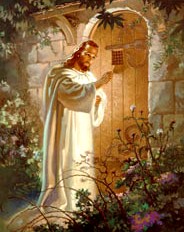Latter Day Saint movement

![]()
Latter Day Saint movement
From Wikipedia, the free encyclopedia
Jump to navigationJump to search
This article is about this religious movement’s origins and general makeup. For treatments of component denominations, see List of denominations in the Latter Day Saint movement.
See also: Mormonism and Mormons
| This article needs additional citations for verification. Please help improve this article by adding citations to reliable sources. Unsourced material may be challenged and removed. Find sources: “Latter Day Saint movement” – news · newspapers · books · scholar · JSTOR (March 2018) (Learn how and when to remove this template message) |
The Book of Mormon
| Part of a series on |
| Christianity |
|---|
| showJesusChrist |
| showBibleFoundations |
| showTheology |
| showHistoryTradition |
| showDenominationsGroups |
| showRelated topics |
| GlossaryIndexOutline Christianity portal |
| vte |
The Latter Day Saint movement (also called the LDS movement, LDS restorationist movement, or Smith–Rigdon movement)[1] is the collection of independent church groups that trace their origins to a Christian Restorationist movement founded by Joseph Smith in the late 1820s.
Collectively, these churches have over 16 million members,[2] although about 98% belong to The Church of Jesus Christ of Latter-day Saints (LDS Church). The predominant theology of the churches in the movement is Mormonism, which sees itself as restoring the early Christian church with additional revelations.
A minority of Latter Day Saint adherents, such as members of Community of Christ, have been influenced by Protestant theology while maintaining certain distinctive beliefs and practices including continuing revelation, an open canon of scripture and building temples. Other groups include the Remnant Church of Jesus Christ of Latter Day Saints, which supports lineal succession of leadership from Smith’s descendants, and the more controversial Fundamentalist Church of Jesus Christ of Latter-Day Saints, which defends the practice of polygamy.[3][4]
Contents
Origins[edit]
The movement began in western New York during the Second Great Awakening when Smith said that he received visions revealing a new sacred text, the Book of Mormon, which he published in 1830 as a complement to the Bible. Based on the teachings of this book and other revelations, Smith founded a Christian primitivist church, called the “Church of Christ“. The Book of Mormon attracted hundreds of early followers, who later became known as “Mormons”, “Latter Day Saints”, or just “Saints”. In 1831, Smith moved the church headquarters to Kirtland, Ohio, and in 1838 changed its name to the “Church of Jesus Christ of Latter Day Saints”.[5][6]
After the church in Ohio collapsed due to a financial crisis and dissensions, in 1838, Smith and the body of the church moved to Missouri. However, they were persecuted and the Latter Day Saints fled to Illinois. After Smith was killed in 1844, a succession crisis led to the organization splitting into several groups. The largest of these, the LDS Church, migrated under the leadership of Brigham Young to the Great Basin (now Utah) and became known for its 19th-century practice of polygamy. The LDS Church officially renounced this practice in 1890, and gradually discontinued it, resulting in Utah Territory becoming a U.S. state. This change resulted in the formation of a number of small sects who sought to maintain polygamy and other 19th-century doctrines and practices, now referred to as “Mormon fundamentalism“.[7]
Other groups originating within the Latter Day Saint movement followed different paths in Missouri, Illinois, Michigan, and Pennsylvania. For the most part, these groups rejected plural marriage and some of Smith’s later teachings. The largest of these, Community of Christ (known previously as the “Reorganized Church of Jesus Christ of Latter Day Saints”), was formed in Illinois in 1860 by several groups uniting around Smith’s son, Joseph Smith III.
History[edit]
Main article: History of the Latter Day Saint movement
The founder of the Latter Day Saint movement was Joseph Smith, and to a lesser extent, during the movement’s first two years, Oliver Cowdery. Throughout his life, Smith told of an experience he had as a boy having seen God the Father and Jesus Christ as two separate beings, who told him that the true church of Jesus Christ had been lost and would be restored through him, and that he would be given the authority to organize and lead the true Church of Christ.[8]
The Latter Day Saint church was formed on April 6, 1830, consisting of a community of believers in the western New York towns of Fayette, Manchester, and Colesville. The church was formally organized under the name of the “Church of Christ”. By 1834, the church was referred to as the “Church of the Latter Day Saints” in early church publications,[9] and in 1838 Smith announced that he had received a revelation from God that officially changed the name to the “Church of Jesus Christ of Latter Day Saints”.[10][11]
In 1844, William Law and several other Latter Day Saints in church leadership positions publicly denounced Smith’s secret practice of polygamy in the Nauvoo Expositor, and formed their own church. The city council of Nauvoo, Illinois, led by Smith, subsequently had the printing press of the Expositor destroyed. In spite of Smith’s later offer to pay damages for destroyed property, critics of Smith and the church considered the destruction heavy-handed. Some called for the Latter Day Saints to be either expelled or destroyed.[citation needed]
Joseph Smith and his brother, Hyrum, the Assistant President of the Church, were both killed by a mob while in a Carthage, Illinois jail, and several individuals within the church claimed to be the senior surviving authority and appointed successors. These various claims resulted in a succession crisis. Many supported Brigham Young, the president of the Quorum of the Twelve Apostles; others Sidney Rigdon, the senior surviving member of the First Presidency. Emma Hale Smith failed to persuade William Marks, the president of the Presiding High Council and a Rigdon supporter, to assume leadership and the surviving members of Smith’s immediate family remained unaffiliated with any larger body until 1860, when they formed the Reorganized Church of Jesus Christ of Latter Day Saints with Joseph’s eldest son Joseph Smith III as prophet. These various groups are sometimes referred to under two geographical headings: “Prairie Saints” (those that remained in the Midwest United States); and “Rocky Mountain Saints” (those who followed Young to what would later become the state of Utah).[citation needed]
Today, the vast majority (over 98 percent) of Latter Day Saints belong to the LDS Church, which reports over 16 million members worldwide.[12] The second-largest denomination is the Missouri-based Community of Christ, which reports 252,000 members.[13] Small denominations that trace their origins to Rigdon, James Strang, or other associates of Smith’s still exist, and several fundamentalist sects which separated from the LDS Church after it rejected plural marriage in 1890 claim tens of thousands of members.[14]
Historically, the different denominations within the Latter Day Saint movement have been hostile towards or dismissive of one another; this is largely because each group claims to be the sole legitimate continuation of the one true church established by Smith in 1830.[citation needed]
Beliefs[edit]
Saint-designation of members[edit]
The beliefs within the LDS Church with regard to saints are similar but not quite the same as the Protestant tradition. In the New Testament, saints are all those who have entered into the Christian covenant of baptism. The qualification “latter-day” refers to the doctrine that members are living in the “latter days”, before the Second Coming of Christ, and is used to distinguish the members of the church, which considers itself the restoration of the ancient Christian church.[15] Members are therefore often referred to as “Latter-day Saints” or “LDS”, and among themselves, “saints”.[16]

































![Lieutenant-Colonel Robert Rogers (7 November 1731 – 18 May 1795) was a British Army officer and frontiersman. Born in Methuen, Massachusetts, he fought in King George’s War, the French and Indian War and the American Revolutionary War. During the French and Indian War, Rogers raised and commanded Rogers’ Rangers, a ranger unit trained for carrying out asymmetric warfare.[2][3](https://www.cowboyron.com/wp-content/uploads/2022/05/1262463_580743685323360_2133853937_o1-1-150x150.jpg)
















![Billie Joe Armstrong & Norah Jones – Silver Haired Daddy Of Mine [Music Video]](https://www.cowboyron.com/wp-content/uploads/2022/11/Al_St._John1-100x100.jpg)























